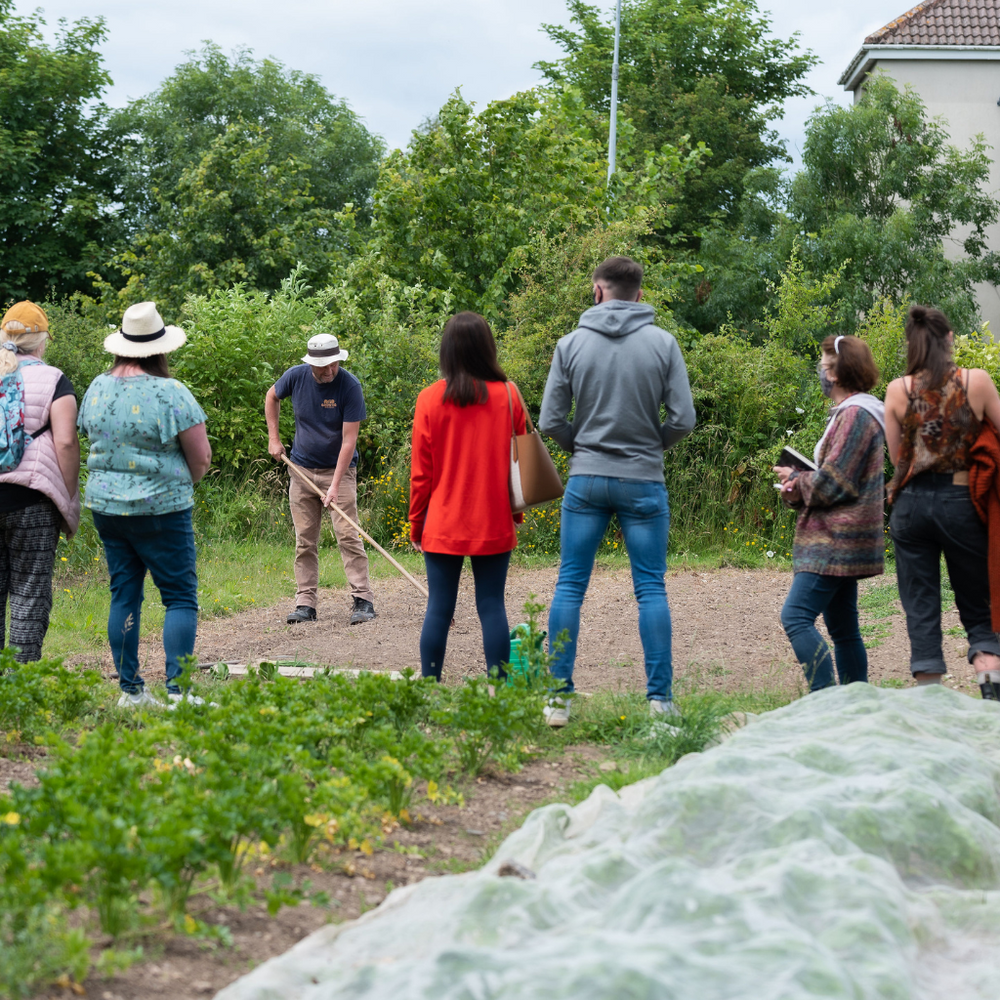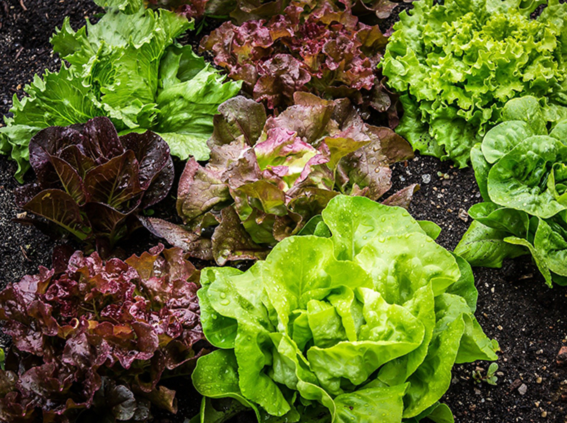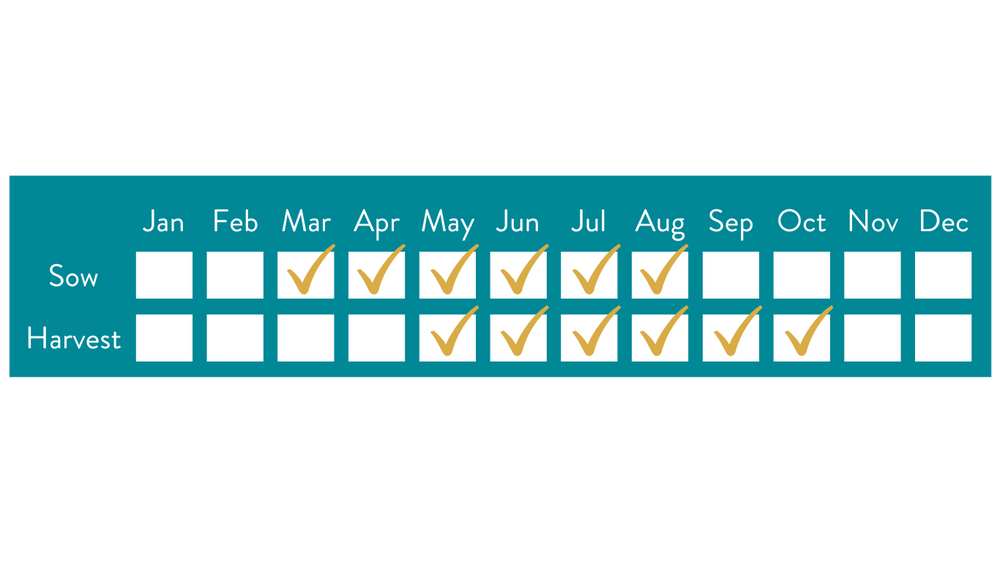
Video Guides
Need to build a raised bed? Or maybe you're battling those pesky slugs. We've got videos filled with easy and practical tips to help you in your veg patch.

Courses
Learn to grown, cook and eat some of your own food with our courses held at GROW HQ.

Lettuce
Veg Type:
Leaves
Growing Location:
Indoors & Outdoors

There are four main types of lettuce. The first three (butterhead, cos and crisphead) form hearts at their centre and are usually grown as proper heads of lettuce. They take longer to mature. The fourth type (loose-leaf/’cut-and-come-again’) doesn’t form a heart and is therefore generally grown as a ‘cut-and-come-again’ crop, where leaves are cut as required.
Recommended Variety
- Sylvesta (butterhead)
- Little Gem (cos)
- Saladin (crisphead)
Sowing
- Lettuce will do well in any reasonable soil, as long as it’s moisture retentive – add well-rotted manure or compost the previous winter.
- When growing heads of lettuce, sow one seed per module in a module tray.
- Lettuce needs light to germinate, so don’t cover the seeds with compost.
- Lettuce will not germinate in temperatures above 25°C, so if the weather is warm you may need to move the trays into a cool shed for a few days until they germinate.
- Seedlings are ready to plant out when they have 4 or 5 leaves.
- Harden off well before transplanting.
- Use fleece or cloches to protect early sowings from frost.
Growing
- Lettuce is a great space filler – you can pop it anywhere you have some space. Spacing is about 20-30cm depending on the type.
- Plant the seedlings well down in the soil with the cotyledons (seed leaves) just above the soil level.
- Keep the soil around the plants weed free and water copiously in dry weather – this will help prevent them bolting.
Harvesting
- Cos, butterhead and crisphead varieties of lettuce need to be left longer than ‘cut-and-come-again’ salad leaves in order to develop their hearts.
- Harvest lettuce leaves early in the day and they will keep far longer. This is because later in the day the moisture has evaporated from the leaves and so it wilts more quickly.
TIPS
- Sow successionally – just 10 seeds or so at a time, every couple of weeks.
- Try growing summer lettuce in partial shade – they don’t like hot weather.
Problems
- Slugs eat young leaves and get into the hearts of lettuces.
- Aphids (black or greenfly) can be a problem.
- Leatherjackets (the larvae of daddy longlegs) eat through the stems of newly planted lettuce.
Our food system is broken and at GIY we believe that nurturing a real connection to where our food comes from is the key to fixing it.
We're on a mission to inspire a global movement of food growers, one GIYer at a time.
Sign up to be the first to hear about all things GIY.













